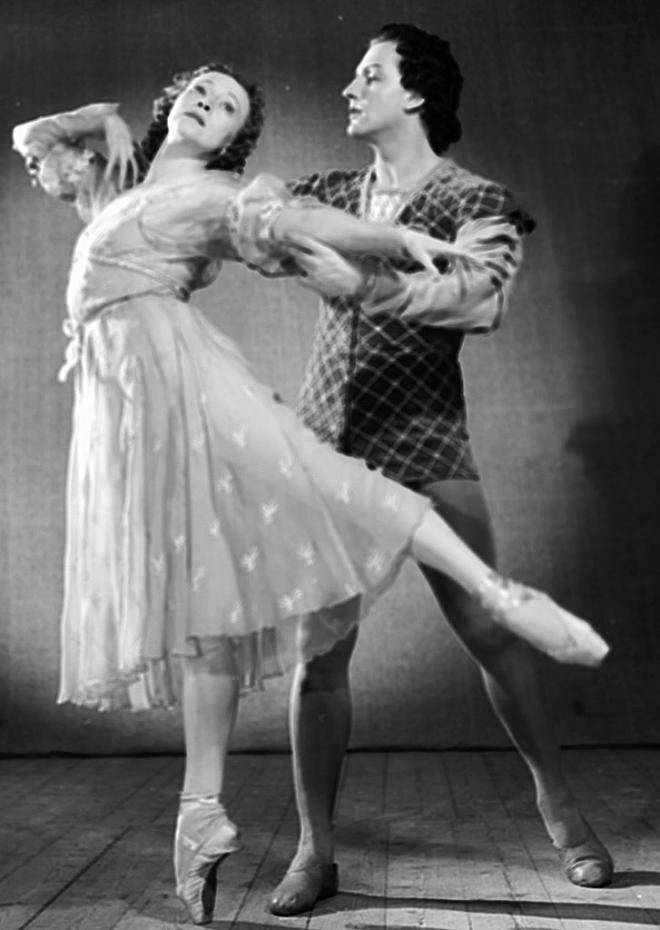As I mentioned in an earlier blog entry, Romeo and Juliet seemed to serve as a rite of passage for Shakespeare as he wrote his first domestic tragedy, which was also his only serious treatment of the phenomenon of young love that he explored so often in his comedies; and it also served as a rite of passage for several composers who produced their own artistic responses to it. In the case of Sergei Prokofiev, his encounter with the play didn't occur until his mid-forties, by which time he found himself improbably returning to the Soviet Union after a career of fleeting successes, crushing disappointments, shifting loyalties and burned bridges. He had yet to truly "choose a lane" as to what kind of composer he was, since he could adjust his style to suit a variety of projects, and, increasingly, the tastes of certain people in his audience whom he wanted to impress. The offer to write a ballet on Romeo and Juliet for the Kirov was the perfect opportunity for him at this juncture, because he wouldn’t have to choose a lane: he could use everything in his creative toolbox to serve the story, without having to worry about being fashionably iconoclastic enough for the fickle audiences he encountered in Paris.
But, as we have seen, anything involving Romeo and Juliet gets complicated, and this might be the most complicated of all the origin stories for works based on the play. Prokofiev’s original vision for his R&J ballet (which was reconstructed and revived by Mark Morris in 2008) was clearly influenced by all the surrealist and iconoclastic performances he witnessed in Paris: the sudden, jarring juxtaposition of tragedy and divertissement seems like an exercise in Brechtian alienation, and the ending, in which the lovers don’t die but escape to another realm free of worldly strife, seems to anticipate West Side Story’s Somewhere ballet by over twenty years. But then the Soviet authorities stepped in and insisted that the ballet’s scenario stay faithful to Shakespeare, while demanding that Prokofiev modify his spiky, Stravinskyish orchestration to sound more lush and Tchaikovskian (while also authorizing choreographer Leonid Lavrovsky to edit and re-orchestrate the ballet as he saw fit over the composer’s objections).The version that resulted in 1940 from all this government meddling was far more Romantic, more narratively coherent, and was a huge international success (and remains so to this day), even while it left Prokofiev a broken man.
This is difficult to say, but could those Soviet bureaucrats have actually been right? Not only about the best way to tell the story of Romeo and Juliet through the medium of dance, but about what Prokofiev’s strengths were as a composer? Could they have known him better than he knew himself? It’s become conventional wisdom to say that this process forced Prokofiev to compromise his artistic integrity and creative autonomy, but one could conversely claim that his first version bore the legacy of him trying too hard to be one of the “cool kids” in Paris and impress the likes of Cocteau and Picasso, while the pressure the authorities placed on him gave him the excuse he needed to be true to his own compositional voice. While that pressure made him personally miserable and broke his spirit, there is no denying that its result is a masterpiece, not only an improvement on the first version but a serious contender for the greatest ballet score of all time, and quite possibly the most successful translation of a Shakespeare play into another medium.
In any event, while Prokofiev may not have reconciled himself to the final version of the ballet, he certainly wouldn’t object to our broadcasting the first of the three suites he drew from the ballet in 1938. This is a rare example of a ballet suite being truer to the composer than the ballet itself! Prokofiev was more interested in musical flow than making any attempt to present a continuous narrative in the suites.
The Suite no. 1, which we will hear tonight, begins with “Folk Dance”, which in the ballet opens act 2 in Verona’s central plaza, setting the stage for the hijinks of Romeo and his friends Mercutio and Benvolio. It continues with “The Street Awakens”, which serves a similar function in Act 1 (before things get violent). The next section, “Madrigal”, accompanies the dangerously intimate dance Romeo and Juliet do together as they first meet at the Capulets’ ball. The “Minuet” then takes us a little ways back to the beginning of that ball, as the guests arrive to the strains of the stately dance. Then, unusually for the suites, we go to the very next number in the ballet, “Masks”, in which the masked Montague gang playfully ingratiate themselves into the party they’re crashing, signaling that they’re just there to have fun and not perpetuate the feud (which everyone is okay with except Tybalt.) We then jump ahead to the famous balcony scene and love dance that closes Act 1 (“Romeo and Juliet”). Finally, we hear a composite movement Prokofiev arranged especially for this suite called “Death of Tybalt” which combines music from the violent finale to Act 2 with some of the fight music from near the beginning of Act 1.
Prokofiev never did choose a lane: he continued to write in a variety of styles, trying to stay one step ahead of the increasingly restrictive conditions for artists under Stalin. And he never did get out from under Stalin’s thumb, since they died the same day.
PBS PASSPORT
Stream tens of thousands of hours of your PBS and local favorites with WETA+ and PBS Passport whenever and wherever you want. Catch up on a single episode or binge-watch full seasons before they air on TV.
